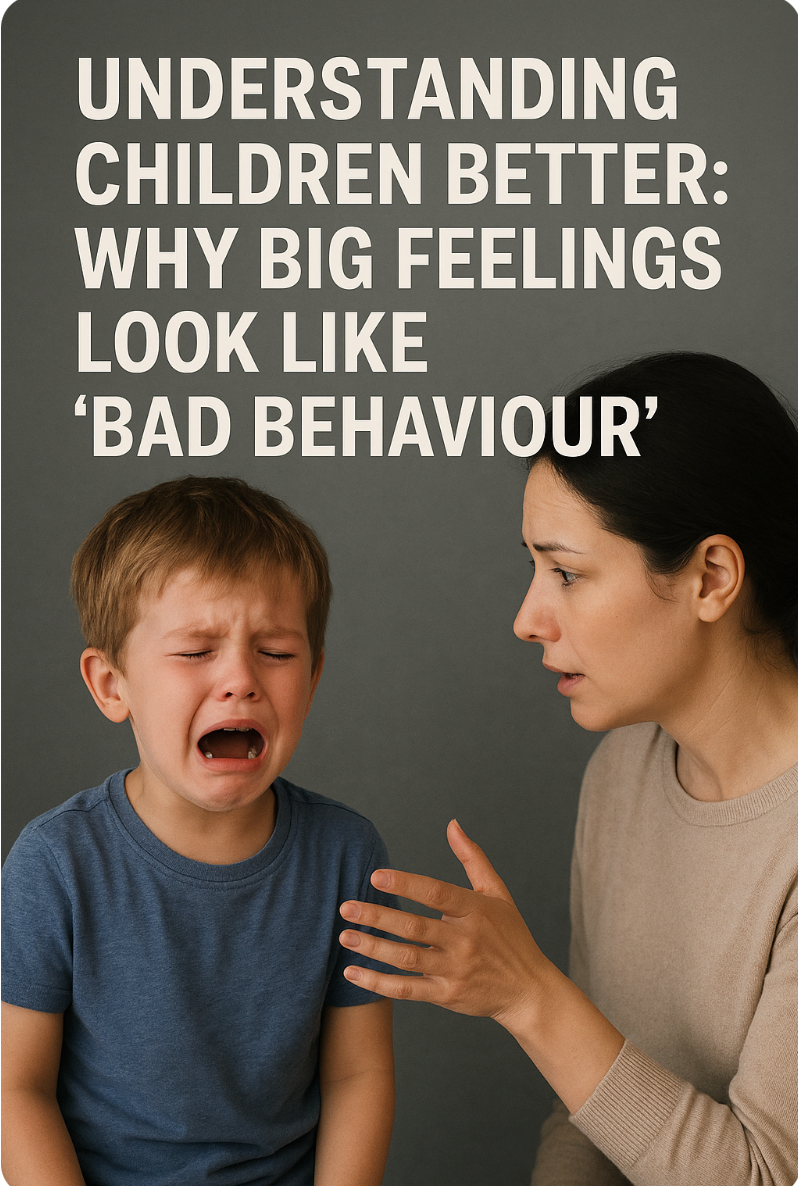The Detective Parent: Learning to See Behaviour as Communication
- drbobcarey
- Aug 25
- 4 min read

Picture this.
It’s 7:30 a.m. and you tell your 8-year-old it’s time to get dressed for school. In an instant, the room explodes—yelling, shoes flying, tears streaming. Your gut reaction might be: “Why does she always make mornings so difficult? She’s just being bad.”
But here’s the Detective Parent’s lens: this isn’t just “bad behaviour.” This is communication.
The Positive Systems Approach (PSA) teaches us that disruptive behaviour is rarely the real problem—it’s a signal pointing to an unmet need. Just like a detective looks at evidence to uncover a bigger story, parents can look at behaviour as a message that needs decoding.
From Punisher to Problem-Solver
Traditional discipline tends to focus on stopping behaviour: time-outs, threats, punishments, sticker charts. These tools can sometimes bring short-term compliance, but they rarely change the why behind the behaviour. In fact, they can create power struggles, erode trust, and leave both parent and child frustrated.
The Detective Parent flips the script. Instead of asking:
❌ “How do I stop this?”
✅ “What is my child trying to tell me?”
That question alone can move parenting from reactive to responsive, from controlling to connecting.
Behaviour as Clues
In PSA, behaviour is evidence. It’s not random, and it’s not meaningless. It serves a function for the child.
A slammed bedroom door might be a plea for privacy.
Constant interruptions might be a need for attention or connection.
Aggression might be a shield for anxiety, shame, or trauma.
Withdrawal might signal overwhelm.
Like a smoke alarm, behaviour isn’t the fire itself—it’s the signal. If we only scold the alarm, we miss the fire burning underneath.
Becoming a Detective Parent (Step by Step)
So how do you actually do this at home? PSA gives us practical tools. Here’s what it looks like in action.
1. Pause Before Reacting
Disruptive behaviour is stressful. Your instinct may be to react quickly—raise your voice, punish, or shut it down. But detectives don’t rush; they pause to assess the scene.
In PSA, pausing means holding back judgment long enough to consider: “What is this behaviour communicating?”
Example: Your son throws his homework across the room. Instead of immediately yelling, you notice this only happens with math. The clue? It’s not laziness—it’s frustration with a subject he finds overwhelming. Pausing turns punishment into problem-solving.
PSA detail: The book (“What if it’s not Just the Behaviour?”) highlights that many behaviours come from unmet needs like fatigue, hunger, sensory overload, or skill deficits. By pausing, you give yourself space to consider those possibilities.
2. Observe Patterns
Detectives look for patterns to crack the case. Parents can do the same. When do behaviours happen? What usually comes right before or after?
Example: Your daughter has meltdowns every day after school. At first, you assume she’s being difficult. But when you track it, you see the pattern: she holds it together all day, then “lets it out” when she’s finally safe at home. Her behaviour isn’t about defiance—it’s about release.
PSA detail: In the book, this is called a Functional Assessment of Behaviour (FAB)—looking at Antecedents (what happens before), the Behaviour itself, and the Consequences (what happens after). Patterns reveal the function—escape, attention, access, or sensory need.
3. Ask, Don’t Assume
Sometimes the best detective work is simply asking the witness. Children may not always have the words, but giving them the chance to explain shows respect and builds trust.
Example: Instead of saying, “Stop being rude!”, you try, “You seem upset—did something happen at school?” Your child blurts out, “Nobody played with me at recess.” Suddenly the behaviour makes sense—it was loneliness disguised as anger.
PSA detail: The book stresses that behaviour is communication. When kids can’t put words to their needs, they act them out. Asking helps them learn to label emotions and builds emotional vocabulary.
4. Collaborate on Solutions
Detectives don’t just solve cases alone—they work with others. Parenting works the same way. Involving your child in solutions gives them ownership and teaches problem-solving.
Example: If mornings are chaos, instead of fighting every day, you and your child agree to:
Pick clothes the night before.
Use a timer for breakfast.
Make a morning checklist with pictures.
The system changes to support success, not just the child’s willpower.
PSA detail: PSA emphasizes system factors—family routines, environment, and consistency. Often, it’s not about “fixing the child” but adjusting the environment so they can thrive.
Why This Matters
Children who feel understood are less likely to shout through their behaviour. Parents who act as detectives model empathy, curiosity, and problem-solving. And families that shift from punishment to understanding build connection instead of conflict.
The Detective Parent doesn’t excuse behaviour—they decode it. And once we decode it, we can teach healthier ways to meet those needs.
Because behind every disruptive behaviour isn’t a “bad kid.” It’s a message waiting to be heard.
Download the Detective Parent Checklist to remind yourself that all behaviour is a form of communication:
To learn about this in more detail, check out “What if it’s Not Just the Behaviour? A New Way to Parent Using Positive Systems Approach”.




Comments